One of the things that China is most famous for is its culinary tradition. Chinese cuisine has had a long history. Today, there’re eight major styles that are results of their respective geographic locations, climate, and cultural traditions. They’re Shandong Cuisine, Jiangsu Cuisine, Zhejiang Cuisine, Fujian Cuisine, Cantonese Cuisine, Sichuan Cuisine, Hunan Cuisine, and Anhui Cuisine.
The most important distinction between different Chinese cuisines is their food processing methods. Essentially, what restricts the development of a region’s food culture is the variety of ingredients. As you might’ve noticed, the provinces that are major culinary hubs are all located either along the east coast of China or the Yangtze River.
Where there are rivers and seas, there are aquatic products, which greatly enhances the options for cooking. Therefore, an important standard for being considered a major Chinese cuisine is serving different foods in different time of the year. Embark on a China food tour or a Yangtze River cruise tour to experience the most authentic flavors of China.
1. Shandong Cuisine: Thick and Rich
Shandong Cuisine (鲁菜 / lǔ cài) is a signature of northern Chinese cuisine, famous for its heavy use of soy sauce and thick texture. It is the richest and the most difficult Chinese cuisine, as it is very particular about heat and seasoning, which take a lot of skills to master. It has been the most influential palace cuisine in Chinese history.
Shandong Cuisine is all about the quality of the raw materials. Relatively heavy on salt and other seasonings, it aims to bring out the original flavors of the ingredients. Prominent cooking methods are bao (stir-frying in high temperature) and basi (coating the ingredient with flour and stir-frying till crispy). Traditional dishes include Braised Intestines, Sea Cucumber with Scallions, and Sweet and Sour Carp.
Recommended Tour: 7 Days Shandong Tour of Qingdao, Qufu, Jinan
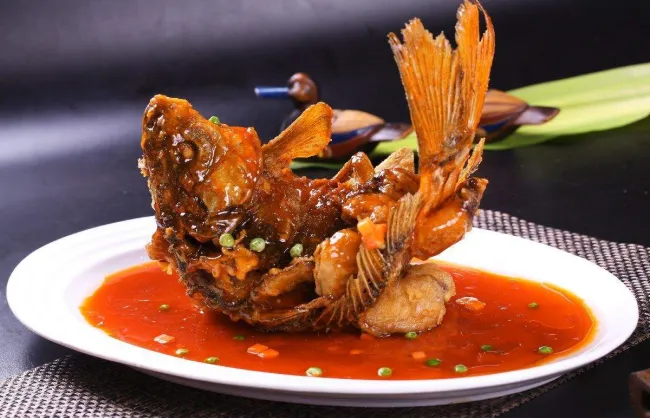
2. Jiangsu Cuisine: The Land of Fish and Rice
Jiangsu Cuisine (苏菜 / sū cài) consists of the traditional foods from four major cities, Suzhou, Yangzhou, Nanjing, and Zhenjiang. It is best known for its tamed and well-balanced flavors, lightness, and delicacy. Dishes must be thick but not greasy, light but not thin. They retain the original flavors of the ingredients, which must always be fresh.
Jiangsu Cuisine has a lot of soup. There’s heavy use of soy sauce and cooking wine. A variety of cooking methods include stewing, braising, steaming, stir-frying, and simmering. The texture of foods is usually tender or crispy. You’ll find some of the best Chinese foods on a Jiangsu tour, like Sweet and Sour Mandarin Fish, Brine-Boiled Duck, and Lion’s Head Meatballs.
One thing that is unique to Jiangsu Cuisine is its emphasis on the presentation of dishes. And behind the delicate and beautifully presented dishes are exquisite knife skills. For example, the classic dish Wensi Tofu is the epitome of knife work in Chinese cuisine. The tofu is sliced into strings as thin as hair but remains attached in one piece. It stays intact in the broth but melts as soon as you put it in your mouth.
Recommended Tour: 3 Days Suzhou Tour with Classical Gardens
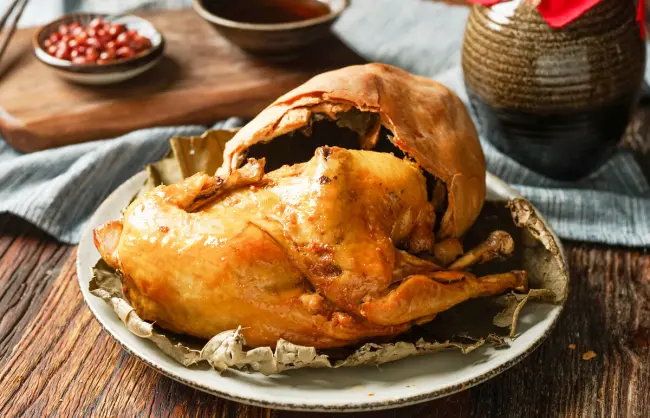
3. Zhejiang Cuisine: Fresh Water Delicacies
Zhejiang Cuisine (浙菜 / zhè cài) is the cultural heritage of cities including Hangzhou, Ningbo, and Shaoxing. The region is home to many Jiangnan water towns. Winding rivers, lakes, and the grand canal allow access to many fresh water ingredients like fish and shrimp. The famous Longjing tea also originates in Hangzhou. All these ingredients are key to the flavors of Zhejiang, fragrant, crispy, tender, and fresh.
To complement the rich ingredients of Zhejiang Cuisine, people often cook with fresh bamboo shoots, ham, mushrooms, and green vegetables, together with scallions, ginger, garlic, Shaoxing cooking wine, vinegar, and other condiments, to get rid of the fishiness of raw materials while bringing out the richness of flavors.
Go on a Hangzhou tour when you travel to China to taste the world famous West Lake Fish in Vinegar Gravy, Dongpo Pork, and Fried Shrimps with Longjing Tea.
Recommended Tour: 2 Days Hangzhou Essence Tour
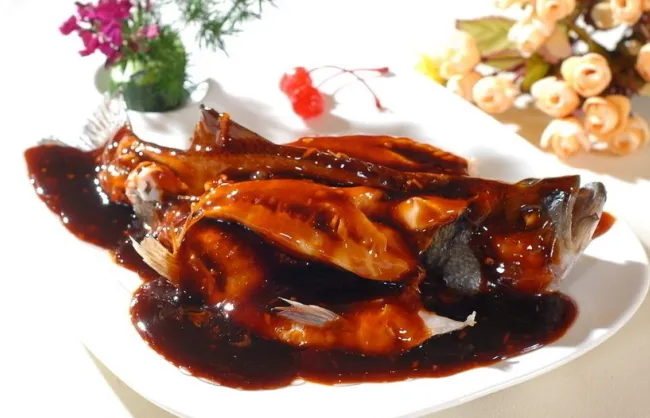
4. Fujian Cuisine: The Taste of the Coast
Fujian Cuisine (闽菜 / mǐn cài) developed from the culinary traditions of Fuzhou, Quanzhou, and Xiamen. Located on the southeast coast of China, Fujian has some of the best Chinese food, especially its nationally famous seafood. A variety of seafoods are used as ingredients, eels, clams, squids, yellow croakers, sea cucumbers, and so on.
Although Fujian cuisine boasts a wide range of flavors, the most important thing is to retain the original flavor of the seafoods. They use sugar to overcome the fishy smell and vinegar for a refreshing touch. Another characteristic is that people like to toss many ingredients into one pot and stew them together for a rich and complex flavor, like the renowned Buddha Jumping Wall. The stew comes out rich and nutritious.
Recommended Tour: 3 Days Best Xiamen Leisure Tour
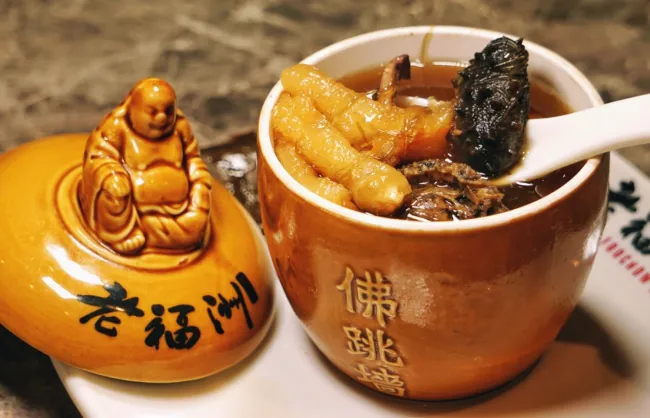
5. Cantonese Cuisine: The Art of Dim Sum
Cantonese Cuisine (粤菜 / yuè cài) is the representative food culture of Guangdong province, especially Guangzhou and Chaozhou. People there use a wide range of ingredients. They have many ways of making chicken, ducks, and pork. Cantonese Cuisine is not heavy on seasoning or complicated cooking methods. They use the simplest methods to bring out the most original flavors of the ingredients.
One of the foods you must have on your China tour is Dim Sum, which is an important part of Cantonese Cuisine. The art of Dim Sum involves an assortment of small dishes, including Char Siu Bao (BBQ pork buns), Har Gow (shrimp dumplings), Siu Mai (pork, shrimp, and mushroom dumplings).
Recommended Tour: 3 Days Guangzhou Historical and City Highlights Tour
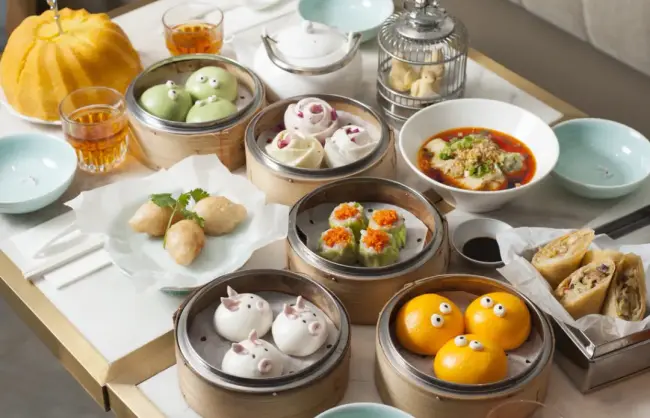
6. Sichuan Cuisine: A Fiery Journey
Sichuan Cuisine (川菜 / chuān cài) is the oldest style of the eight Chinese cuisines with over 4,000 dishes in total. Best known for the food culture in Chengdu and Chongqing, it is characterized by bold and spicy flavors. With heavy use of chili peppers, peppers, and peppercorns, most dishes look, smell, and taste spicy! What’s special is that these Sichuan peppers are numbing as well.
Because of its location, Sichuan cuisine integrates the culinary traditions of southeast and northwest China. If you travel to China, make sure you try the famous Kung Pao Chicken, Mapo Tofu, and of course, the traditional Sichuan hotpot, and most popular Chongqing foods on your Sichuan tour.
Recommended Food Tour: 3 Days Chengdu City Tour with Food Exploration
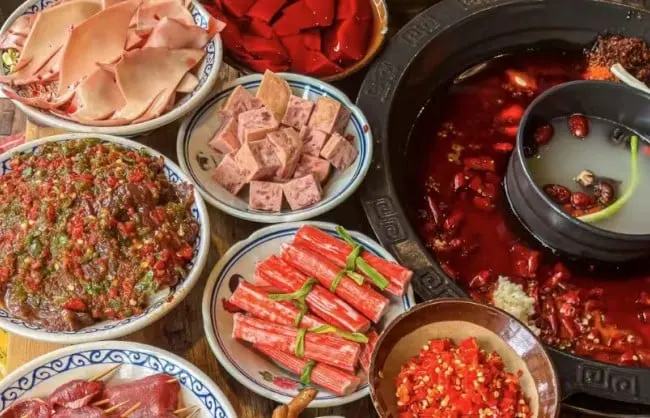
7. Hunan Cuisine: Spicy and Tender
Hunan Cuisine (湘菜 / xiāng cài) is even spicier than Sichuan cuisine without the numbing sensation of Sichuan peppers. It is heavy on the oil, salt, red chili peppers, garlic, and vinegar to offset some of the spice. Hunan cooking, compared to other Chinese foods, is humble and feels like home-cooking. Classic dishes include Steamed Fish Head with Diced Spicy Red Peppers, Chairman Mao’s Red Braised Pork.
Recommended Tour: 7 Days Hunan Tour from Changsha to Zhangjiajie
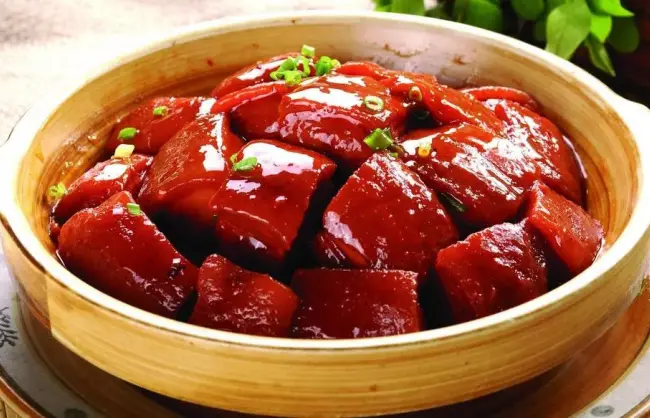
8. Anhui Cuisine: Flavors of Central China
Anhui Cuisine (徽菜 / huī cài) is a representative style of central China. It uses local ingredients, is heavy on oil and coloring. Braising and stewing make the dishes thick and flavorful. Classic dishes include Stewed Turtle with Ham, Honeycomb Tofu, and Stinky Mandarin Fish.
Recommended Tour: 3 Days Huangshan Mountain and Hongcun Ancient Village Tour
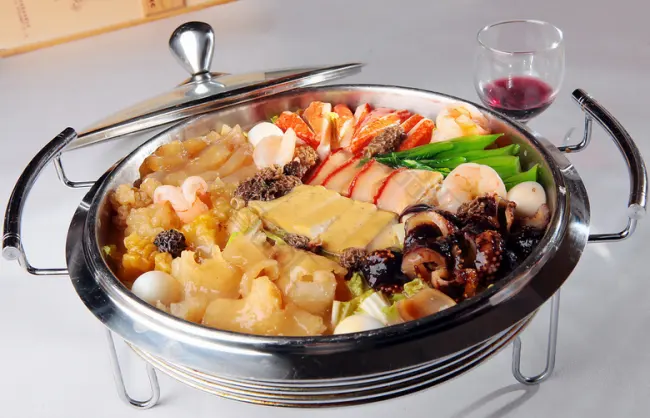
FAQs about Chinese Cuisine
- Are there any vegetarian options in Chinese cuisine?
Yes, Chinese cuisine cooks with lots of tofu, mushrooms, and vegetables. There’re many different kinds of vegetables across different regions.
- How important is tea in Chinese food culture?
Tea is served as a gesture of hospitality and helps cleanse the palate between dishes. It’s a common drink to have with Chinese meals. Read more about different types of tea and Chinese Tea Culture.
- What are the main ingredients used in Chinese cuisine?
Chinese cuisine commonly uses ingredients like rice, wheat, soybeans, vegetables, pork, beef, chicken, fish, and various herbs and spices. Different cuisines cook with locally found ingredients in different seasons. Read about the 15 Most Popular Chinese Dishes.









